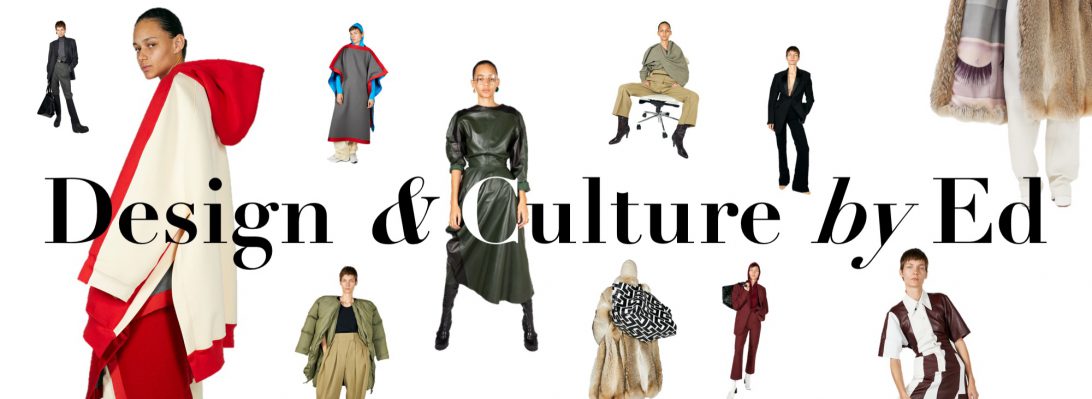With digital shows and presentations, it’s quite difficult to geo-locate, and while Wales Bonner is a London-based label, it’s presenting spring-summer 2021 as part of Paris Fashion Week. What Grace Wales Bonner has been proposing throughout her career is a concept that has now, finally, come toward the forefront of fashion: exploring Black culture and aesthetics with the same nuance and consideration that has long been afforded Eurocentrism. This season, alongside a look-book photographed by Sean and Seng, the designer remotely worked on a film with director Jeano Edwards to present an immersive, intimate snapshot of Jamaica, and has created a digitally available zine to further expand on her research process. There is a piece in it written by Mahfuz Sultan, where he describes the importance of “Grace’s poetic interstices, the worlds between worlds, where Africa, India, and the islands touch as if on a dance floor…at least for those of us who, like Malik Ambar or Aimé Césaire, have spent our lives on the postcolonial circuit, flickering in and out of other stories as shades, exiles, ephemera.” It is that illumination that has forged a pathway for London’s array of emergent non-white designers: a flourishing generation following in her footsteps and narrating their own histories and identities. “There’s always been a continuity to the way I’ve worked, because I’ve expressed who I am and my position quite clearly since I started,” Wales Bonner says. Now, she continues: “When people expect me to have some point of view on what’s been happening…well, I feel I’ve tried to show that over the past five years. There are certain things we’ve always known. It’s more that now, other people are catching up.” This season that sense of continuity, and of Wales Bonner applying her microscope to regularly marginalized narratives, was more explicitly visible than ever. Instead of taking a new era as her starting point, she zoomed in further on her deeply personal autumn 2020 offering: an exploration of Lovers Rock and the second-generation Jamaican community of 1970s London. While last season was situated in Lewisham, and within the wardrobes of her father and his friends in late-1970s London, this time she located her perspective in early-’80s Jamaica. “It’s been a really wonderful exercise to be able to go into more depth and reflect on research over a more extended period,” she notes. Having visited Kingston just before the pandemic hit, Wales Bonner had already begun her research. An exhibition on dancehall culture at the National Gallery of Jamaica, alongside a meeting with curator Maxine Walters, had directed her toward figures like reggae icon Augustus Pablo who’d wear “incredible shirts with amazing, elongated cuts, which felt very British.” During a trip to Bob Marley’s house, now a museum dedicated to his life, she was struck by a pair of World War II military trousers he’d cut into football shorts: “a connection to Britain transformed, and then integrated into his lifestyle.” “While the first collection was about viewing the Caribbean community from a British-centric perspective, this one is thinking about a similar community in a completely different place,” she explains. “I was interested in British clothes that ended up in the Caribbean and were transformed by how people put them together and their context.” While she notes that the diaspora wore their heritage “exaggerated, extreme, and brighter, showing their connection to Jamaica in a louder way” on the island, particularly among its dancehall musicians, she discovered that there was a more pronounced emphasis placed on the aesthetics of Britishness. “There was a classicism that was celebrated and romanticized,” she continues. “There was a certain sense of sophistication of having something European.” So the shirt-making traditions of Jermyn Street, or the Savile Row tailoring that has long been one of her fixations, found new resonance in a striped nightshirt she describes as “the Stockwell dashiki,” or a “Kingston caftan” in tailoring wool. Flashes of jockey silks, or near-luminous knit cardigans, injected a proud flamboyance; a woven jacquard jacket, developed from West African wax textiles, translated bold 1970s geometrics into the Wales Bonner world. Her womenswear, which has often taken a preppier tone than her men’s, relaxed into ribbed knitwear with handcrafted crochet stripes, or a fringed, flowing dress, but a checked box-pleated skirt suit retained her particular take on feminine formality. “The collection is called Essence, and in a way, I was taking this time to reflect on what is essential within Wales Bonner,” she says. “How do I reflect the brand DNA in everything that I do?” That sentiment was echoed in Wales Bonner’s partnership with Adidas Originals, which has only been integrated in glimpses before, but took center stage this season, yet, rather than appearing like a commercial collaboration, seemed rooted in synchronicity. The brand’s research team, she explained, were able to source a wealth of archival imagery for her, documenting how dancehall musicians had once worn their wares and so the narrow cuts of track pants, or the crops of tailored jackets, have a particular historicism to them. “It’s about reworking pieces from the archive but with a more elegant, or craft sensibility,” she notes of the crochet three stripes, the hand-finished football boots, or the satin finish of fabrications. “What I do is quite subtle, but it’s about attention to detail.” Such a statement could operate as an explainer for Wales Bonner’s practice—and, as it ever has, in 2020 her approach shines.
Collage by Edward Kanarecki.





One thought on “Worlds Between Worlds. Wales Bonner SS21”